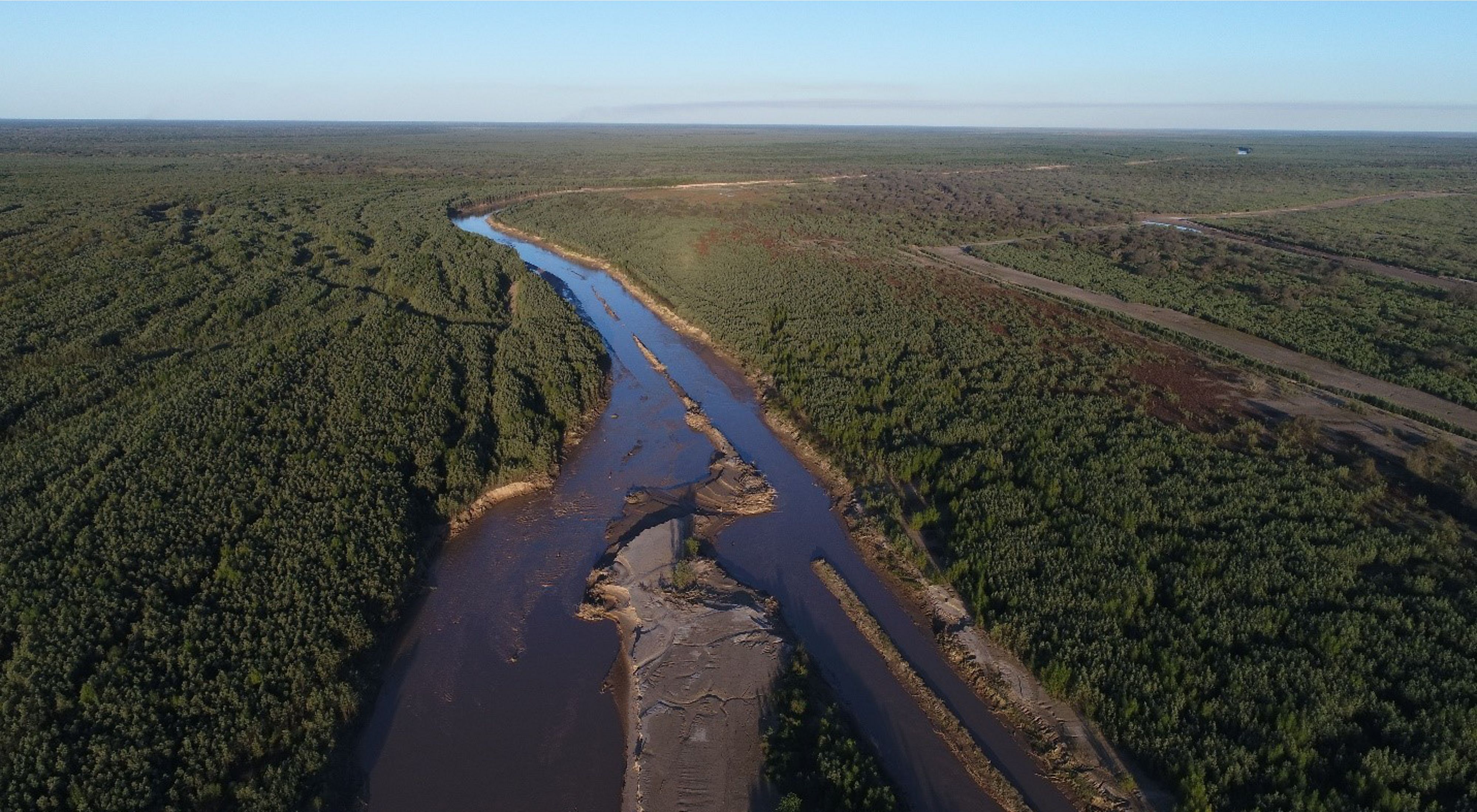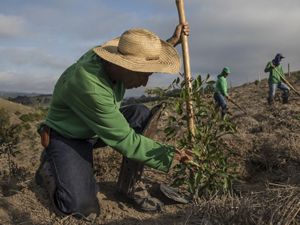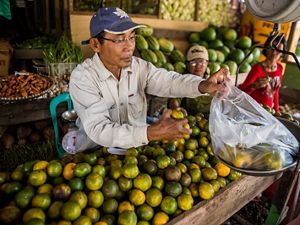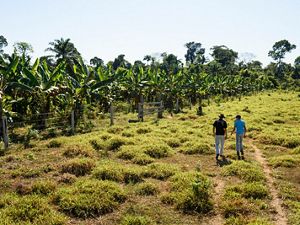Regenerating the Gran Chaco
by Mauricio Castro Schmitz, TNC Latin America, and Ashleigh Papp, Berkeley Lab
A regenerative food system can help restore depleted soils in South America’s second-largest forest, creating positive change for communities, economies and wildlife.
From high up in the sky, you can see a sprawling mosaic of greens and browns. As you move closer to the land, these figures materialize into a patchwork of expansive savannas, intricate dry forests and narrow wetlands. Neutral shades of tan dominate this dry landscape. Rain is rare—but plants and wildlife flourish alongside millions of people on this critical foodscape.
Welcome to the Gran Chaco, a vast biome spanning four countries in South America—Paraguay, Brazil, Bolivia and, with about 60 percent of its land area, Argentina. It is home to the world's second largest forest and one of Latin America's last strongholds for biodiversity.
It’s also a region that has seen intensive agricultural development, some of which has put both wildlife and local communities at risk. But a new approach to producing food—one that regenerates the land rather than degrading it—could mean better outcomes for people and nature.
Historic Hunting Grounds
For centuries, indigenous peoples of this biodiverse region have relied on the landscape for their own health and survival. The Gran Chaco’s name is derived from the word "chaku" which translates to “hunting ground” in Quechua, an Indigenous language native to this part of South America. But this landscape, like many other open areas of land in Argentina, looks very different nowadays. What was once a diverse breadbasket for the local community has now become a global center for just a handful of commodities.
Over the last one hundred years, the forests of the Gran Chaco have been changing, at first to fuel the expansion of Argentina's railroad system and then to make way for crop and cattle ranching operations. Over the last twenty years, these open grasslands have been transformed to large scale soybean and beef production. In a landscape that stretches over one million square kilometers —roughly four times the size of the United Kingdom —an estimated twenty-five percent has been cleared for agricultural expansion.
Quote
A new approach to producing food—one that regenerates the land rather than degrading it—could mean better outcomes for people and nature.
Growing the same crop year after year has led to overworked and undernourished soils that depend on synthetic fertilizers for productivity. Patchy forests, which once served as corridors for species like jaguars and giant anteaters, have been cleared. These changes not only threaten biodiversity, but dramatically impact the region’s ability to adapt to climate change and cope with natural disasters. Fewer trees mean higher temperatures, elevated carbon emission, and dry, depleted soils that are more likely to erode during floods or droughts, threatening not only local water quality and quantity but also the region’s food security.
Using Nature to Help Nature
In 2015, The Nature Conservancy (TNC) began working with local farmers and the larger conventional agricultural operations to introduce the concept of regenerative agriculture—a nature-based solution that was commonly used by indigenous communities in the Gran Chaco centuries ago. It's based on the principle of giving back to nature the resources needed to produce food— healthy soil, water, biodiversity—so the land can continue producing year after year. This regenerative approach maintains yields and helps to protect the land from deforestation through a landscape-level approach to agriculture that includes habitat conservation and restoration.
For instance, one of the ways soybean farmers in the Gran Chaco are working to replenish their soil's nutrients is by planting small, surface-dwelling plants between rows of crops. Known as cover crops, these plants aren't harvested for income, but they help to incorporate minerals into the soil to help boost overall productivity, as well as prevent erosion.
Ranchers in the Gran Chaco are also figuring out how nature can benefit livestock production. Building on a framework from Argentina's National Institute of Agricultural Technology (Instituto Nacional de Tecnología Agropecuaria), farmers have started to allow cattle to graze in forests instead of clearing more land to open pastures. This approach doesn't work for all ranchers but is a viable alternative for smaller to medium-sized ranching operations. Forest grazing provides a wider range of foraging options for cattle, protection against intense heat and moisture retention for understory plants. In return, the cattle fertilize the ecosystem and even help to spread the seed of carob trees, a species that is vital to the health of forests in the Gran Chaco.


Where Local Communities Thrive
In addition to building healthier agricultural and livestock operations, regenerative practices in this important global foodscape are also helping to boost local livelihoods. Farmers who are using these practices in the Gran Chaco can better manage their land and produce higher quality crops over time. Adopting a regenerative approach to farming and livestock production also increases the resilience of the land and the ecosystem’s ability to adapt to climate change, translating into faster and better recovery from climate events.
Throughout the years that TNC has been working with smallholder farmers, we have learned that implementing regenerative practices can be challenging. Working with farmers on a systemic approach is key. One successful practice has been the peer-to-peer outreach between farmers who are already using regenerative practices with those that have not yet started, so that they can share best practices and “on the ground” advice, from one neighbor to another.
Quote
The Gran Chaco can serve as example on how large-scale food production can thrive alongside small farms while preserving biodiversity and supporting a local food economy that invests in nature-based solutions.


Getting small, medium and large farmers to adopt regenerative agriculture practices remains our top priority in the Gran Chaco. We’ve seen some encouraging progress recently, with one of the world's top agricultural producers committing to sourcing 50 percent of their ingredients, such as soybeans, from regenerative farms in the Gran Chaco by 2030. This is an ambitious goal in a short timeframe, and a promising first step.
Yet, we only have a decade to change the course of our planet, and part of that is shifting to a food system that restores nature instead of continue depleting it. The Gran Chaco can serve as example on how large-scale food production can thrive alongside small farms while preserving biodiversity and supporting a local food economy that invests in nature-based solutions. Rich agricultural fields and forest corridors, producing healthy food and supporting healthy communities— that's what we can gain here. That's our definition of success.
Global Insights
Check out our latest thinking and real-world solutions to some of the most complex challenges facing people and the planet today.



